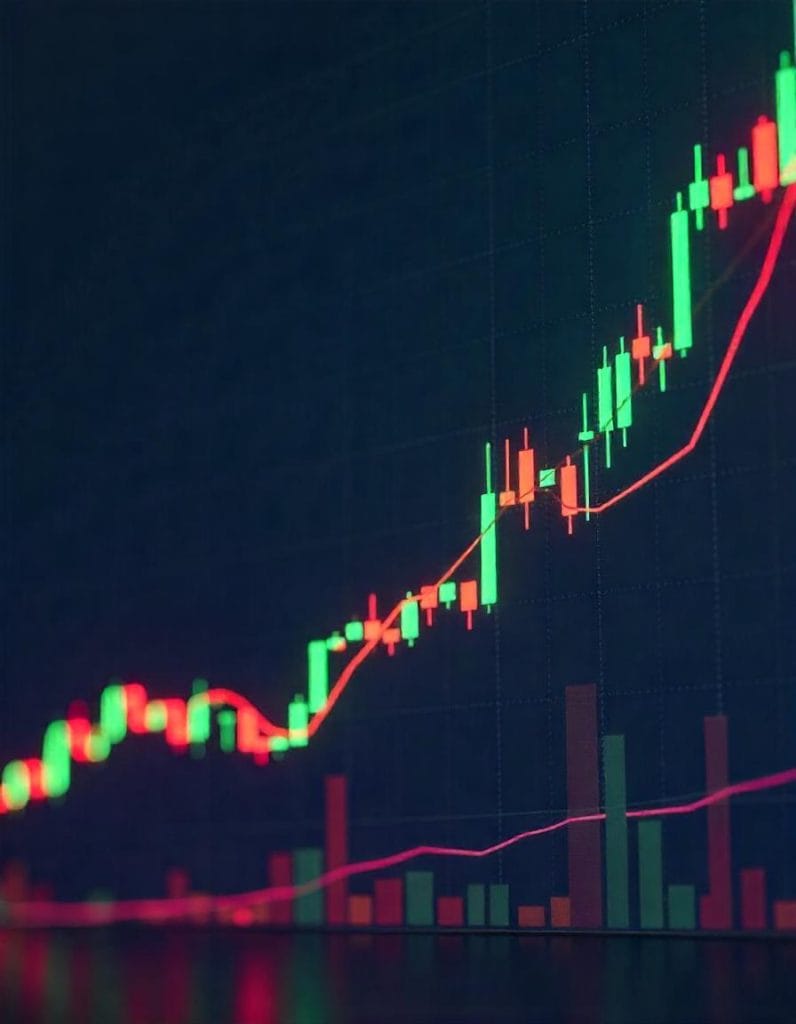The Binance market data serves as a catalyst in cryptocurrency trading which enables both the investors and the traders to logically think processes. Regardless of whether you are a new trader or have been trading for a long time, the knowledge of Binance market data may be a game-changer in predicting the movements of the market and thus making the business profitable.
Besides, the main point of our writing is to touch upon the importance of Binance market data, give a basic outline of the instruments necessary, present the key indicators of the market and the steps to be taken to take advantage of the crypto market evolution.
Binance Market Data: What It Is and Why It Matters
What Is Binance Market Data?
Binance market data is the information that shows the actual and previous prices, and the volume of buy and sell orders, on the Binance exchange. Price charts, the order book, trading volume, open interest, and funding rates are examples of data that Binance provides. It’s this data that allows traders to assess market conditions and assess the risks associated with certain trades.
Why Binance Market Data Is Important for Crypto Trading
- Choice of which alternative to choose – Thus, traders can make choices based on Binance market data, based on the current market conditions, and adopt the new point of view in market trading.
- Preference for option – Based on the relationship between historical data and current data, traders will favor one outcome over another.
- Registering a Demand – A spike in the volume, the order book changing, and price variation are signals that tell the trader the market is either bullish or bearish.
- Boosting Trading Techniques – Introducing Binance market data to a strategy results in trading that is both accurate and profitable.
Essential Binance Market Data Components
1. Price Charts and Candlestick Patterns
Price charts offer visual information on the trajectory of a cryptocurrency’s price over time. Trading charts are graphic representations of the price of a security, and they are necessary to track the stock trades.
- Bullish Patterns – Hammer, Morning Star, Bullish Engulfing
- Bearish Patterns – Shooting Star, Evening Star, Bearish Engulfing
2. Trading Volume and Market Liquidity
The measure of volume expresses the sum of exchanged assets in a particular period. The volume is high, with more people interested in the cryptocurrency. In contrast, when the volume is not big enough, it suggests low participation in the market.
- High volume with rising prices – Indicates strong bullish momentum.
- High volume with falling prices – Suggests strong bearish momentum.
- Low volume with price movement – May indicate market manipulation or false breakouts.
3. Order Book and Market Depth
The buy and sell orders in the order book represent the trading activity on Binance. The market depth graph is the representation of liquidity in different price scales.
- Large buy walls – Suggests strong demand and potential price increases.
- Large sell walls – Indicates strong supply and possible price declines.
4. Open Interest and Funding Rates
These numbers are the most important ones for futures traders on Binance:
- Open Interest (OI) – Measures the number of open futures contracts. A rising OI implies that new funds are being put in the market.
- Funding Rates – Are the cost of trading with leverage, which would change according to the market trend and the trader mindset in the longest term, usually, it is overnight.

Key Binance Market Data Tools for Traders
1. Binance API and TradingView Charts
API bins are tricked into connecting to the trading data using algorithmic programs. TradingView has an array of methods of visualizing the market for traders to use in market analysis.
2. Depth Charts and Order Flow Analysis
Depth graphs are a common way of representing the supply levels in the market. This is useful whenever a trader wants to pinpoint whether the market is in the accumulation phase or the distribution phase.
3. Real-Time Ticker Data and Historical Trade Data
Real-time ticker data is the fastest way to display an agent’s price updates, while historical trade data is the main tool to discover long-term trends in any market of financial securities.
4. Derivatives and Futures Data
Adding futures data to the combinations might reveal the information necessary to decide. Futures data consists of, among others the open interest and continuous funding rates, and thus are crucial for the insights into trader sentiment and leverage usage.
Key Indicators to Predict Market Trends Using Binance Market Data
1. Volume Spikes and Price Action
- Increasing volume during an increase – a strong breakout is confirmed.
- High volume during a decrease – There is a strong selling pressure when more shares are sold than bought (more supply than demand).
- Low volume in a developing trend – A small rise is most probably happening.
2. Whale Transactions and On-Chain Metrics
By analyzing large transactions, you may catch the first sign of institutional buying and selling.
- Huge buy orders – These signal positive actions.
- Huge sell orders – This means an imminent decrease is going to happen.
3. Market Sentiment and Social Indicators
It’s common knowledge that the surrounding social media, news, and community discussions are the major elements that largely influence the financial markets. Taken Binance market data can be used to confirm these strategies based on sentiments as valid.
4. Correlation with Bitcoin and Altcoin Cycles
- Bitcoin Dominance (BTC.D) – In case dominance of Bitcoin goes high, it means altcoins will be hurt a lot.
- Altcoin Season Index – Plays an essential role in the identification of profitable trading opportunities.
Trading Strategies Using Binance Market Data
1. Trend Following Strategy
- One can detect the shifting trends using Moving Averages (MA).
- Filtrate trending configurations by the help of the downloadable RSI and MACD indicators of the market.
2. Breakout Trading
- Identify price consolidations ahead of strong main breakouts.
- Seek confirmation of breakouts via volume analysis.
3. Mean Reversion Strategy
- Deal with the overbought and oversold conditions by using RSI.
- Consider the zone for you to get the best entry point after the market moves in the opposite direction of the signal.
4. Scalping and High-Frequency Trading
- Real-time low-latency information provided by data feeds for smooth trading operations.
- Conduct fast trades due to the fact that they are largely the by-products of short-term market imbalances.
Common Pitfalls to Avoid When Using Binance Market Data
1. Misinterpreting Short-Term Volatility
It is not recommended to react impulsively to small price movements, rather it’s better to consider the bigger picture.
2. Ignoring Market Manipulation and Whale Influence
Suspicion of fake orders and large traders who cause sudden rises in market prices.
3. Overreliance on a Single Data Point
Robustness against multiple factors should be built to allow for effective decision-making in trading.
4. Failing to Adapt to Market Changes
Cryptocurrency markets are fast-moving. Traders should constantly keep updating their strategies so they adapt to the Binance markets.
Conclusion
Binance market data is a critical, infallible source for traders to foresee the next move of the cryptocurrency market. Traders can utilize techniques like analyzing price charts, trading volume data, order book data, and futures market data to make well-founded decisions while realizing the can optimize their trading strategies.
To make it in the crypto trading industry you have to use Binance market data effectively, as well as follow risk management, do technical analysis, and of course, the market psychology. The role of Binance market data in predicting the price rise will be raised to be even much more valuable in the future as AI technologies will develop significantly.
It is important to be updated and continuously augment your skills and knowledge while using Binance market data smartly and walking through the hazardous terrain as best you can!
Disclaimer: This article is for informational purposes only and should not be considered financial advice. Always conduct your own research before investing in any cryptocurrency. Read our full disclaimer here.

